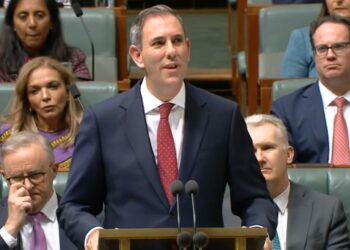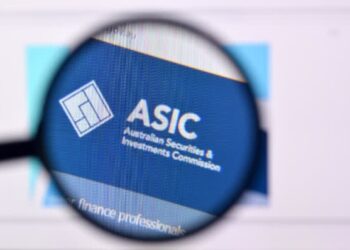When the Australian Securities and Investments Commission (ASIC) industry funding model was initially introduced in 2017, the levy cost advisers $26.15 million, at a minimum cost for each licensee of $1,500 plus $934 per adviser.
In its seventh year now, ASIC announced on 9 July that the 2023–24 levy will leave the profession out of pocket an estimated $48.4 million, at $1,500 plus $2,878 per adviser, more than tripling since its inception.
Appearing on the latest episode of The ifa Show, WT Financial Group managing director Keith Cullen argued that the ASIC funding model is incredibly flawed and in dire need of an overhaul for the sake of the future of the advice profession.
“The $1,500 was fixed by a regulatory instrument seven years ago now as the base fee per AFSL. Every regulatory instrument since has simply taken that $1,500, never varied it, and multiplied it by the number of AFSLs that are authorised to give personal advice,” Cullen said.
While he argued that the levy is not in itself an unreasonable amount to charge advisers, he also noted that the current funding model for ASIC is highly flawed.
“On one argument, you can say that a fee of $2,500 or $3,000 per adviser to be registered into a profession is not a lot of money. And I think if you look at where the average revenue per adviser is headed in Australia, it’s easy to argue it’s not a lot of money,” he said.
Earlier this year, an adviser put forward a petition to the government asking that the portion of the levy paid by licensees be increased to reduce the financial burden on advisers, particularly as the previous ASIC levy freeze was not being renewed and saw the cost more than double for advisers while licensees continued to pay $1,500.
Cullen said it was hard to argue with the perspective that licensees should be covering a much greater proportion of the costs.
“This adviser argued to me that if 50-60-70 per cent of ASIC’s work is interfacing with licensees, then why aren’t licensees paying 50-60-70 per cent of the fee? And even if that’s not the case, then in a time when the adviser levy has tripled, why hasn’t the licensee levy tripled to at least be $4,500? That would remove some of the onus,” he said.
“I think if we’re going to be stuck with this model that we’ve got, that certainly makes a lot of sense to me. To have some form of reasonably significant increase on the amount being levied at a licensee level and then that will take the burden off individual advisers.”
Approaching the issue from another angle, Cullen explained that ASIC’s funding model should be overhauled to offer more constraint on its budget, rather than allowing it to operate without financial limitation and then make the profession cover the costs.
“I thought Senator Bragg’s report had a lot of very important things to say, but one of the concerns I had over the proposal to use the likes of fines and penalties to fund ASIC, that’s a bit perverse in and of itself,” he said.
“I don’t think anyone would mind if they just fixed the fee and created a budget that ASIC needed to operate within. I think there’s something perverse about the way the model works in so much as you’re really removing any form of budgetary restraint for supervision of the profession from ASIC and you’re saying, ‘Spend as much as you like, we’ll get it all back from the advisers’. And this was one of the concerns I had.”
Cullen argued that the current funding model, in a way, gives ASIC greater incentive to inflict additional costs on advisers as a way to increase their funding.
“As a comparison, if you decided that if you told your local police sergeant that he would have more staff if he raised a bit more money from speeding fines and jaywalking, then he could have a couple more staff members and they could all have some more time off. Well, you know what’s going to happen in your local community,” he said.
“So, I think we need to be very careful about what we’re wishing for in that regard. But definitely the model needs to change from where it is. There’s no question in my mind.”




Firms like Wealth Today are not looking after the interests of Advisers. Since getting my own AFSL and witnessing these firms externally, I can wholeheartedly say, that the more complexity, the worse the legislation gets…the better it is for them. The more support services they can provide, and more services, the higher the fees. The interests of a licensee and Adviser are on different pages.
I recall an AFSL head saying the ideal client is the FP business with multiple partners arguing among themselves so they can come in a provide and be a sounding board.
I don’t think Advice Firms being aligned to large AFSL is in the best interest of consumers.
The concept of significantly increasing the fee per licensee is a ploy by the big licensees to eliminate single adviser afsls and small afsls. They are bleeding advisers who are setting up their own licence.
Exactly! Here’s a better plan. Get rid of afsls. Advisers to be deemed professionals and regulated by professional associations properly like all other professions. Asics levy for product manufacturers including those licensees that run their own smas and clip the ticket.
On what planet is this guy living? The licensee will simply pass this cost on to the adviser. Ridiculous statement to make. Moreover, why aren’t the general advice AFSLs and advisers paying this levy. It is an advice levy, if ASIC is investigating general advice issues (Westpac as an example) then why aren’t they paying??
The ASIC funding model is due for a serious overhaul, and one compelling argument is for AFSLs to logically bear a larger share of the levy. Here’s why:
AFSLs essentially act as delegated regulators, performing vital day-to-day regulatory functions that ASIC cannot manage on its own, although they are becoming more of a micro-manager. Most of ASIC’s interactions are with AFSLs rather than individual advisers, and even then ASIC’s efforts are largely concentrated on larger AFSLs, while micro AFSLs have enjoyed a regulatory pass until Kirkland’s recent declaration to focus more on them.
The fixed, unindexed $1,500 levy for AFSLs, while adviser costs have tripled, highlights a significant flaw in the current funding model. This arrangement has unfairly burdened advisers with the lion’s share of costs, while letting AFSLs off the hook. This imbalance was a result of poor drafting and a lack of foresight, allowing AFSLs to escape their fair share of the financial burden.
Given that AFSLs are pivotal in ASIC’s regulatory framework, it is only fair that they contribute more substantially. A more balanced approach would see AFSLs carry a heavier load, reducing the adviser levy to under $1,000. This adjustment would alleviate the disproportionate strain on small business owners, who have been consistently disadvantaged by the current system.
Furthermore, this issue underscores a broader problem: the failure of the FPA, historically influenced and captured by the banks, to advocate effectively for a fairer levy distribution. Had the FPA taken a stronger stand, the burden might have been more equitably shared from the start.
More irrelevant ‘look at me’ antics from Keith Cullen!
The net result will still be the same.
It doesn’t matter, it will still get passed onto the end user.
ASIC -> AFSL -> A/R -> Client.